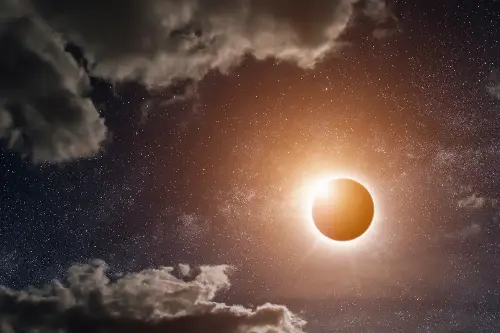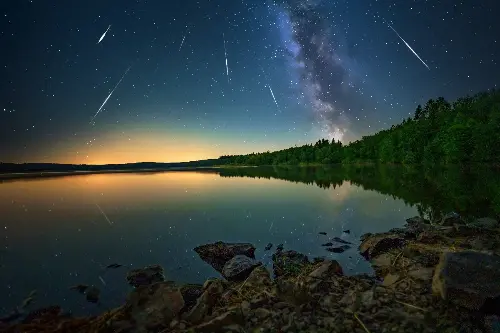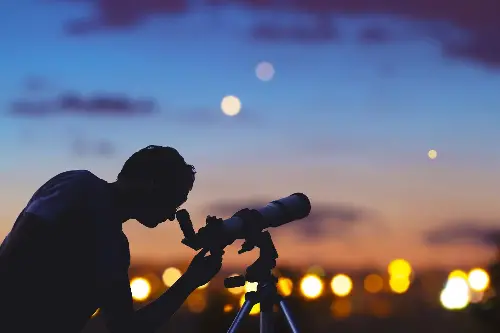As we gear up for another year of cosmic displays, the celestial calendar for 2025 promises a host of spectacular events that will grace our night skies. From supermoons to lunar eclipses, meteor showers to planetary alignments, these natural spectacles offer an awe-inspiring experience that reminds us of the vastness of our universe and the beautiful symphony it orchestrates above us. Whether you are a seasoned stargazer or just developing an interest in the stars, make sure to mark these dates on your calendar for a celestial show that is sure to mesmerize.
Supermoons: A Closer Look

A supermoon occurs when a full moon coincides with the moon’s closest approach to Earth in its orbit, known as perigee. This happy alignment makes the moon appear larger and brighter in the sky. The phenomenon has always captured the public’s imagination due to the moon’s magnified beauty and presence.
In 2025, we are privileged to have several supermoons. The closest and largest supermoon of the year is anticipated to occur in October to December, offering an exceptional night for moon observers. If you’re located in a place with clear skies and minimal light pollution, consider yourself in for a treat as the moon bathes the landscape in its silvery glow.
- January 14: Wolf Moon
- February 12: Snow Moon
- March 14: Worm Moon
- April 12: Pink Moon
- May 12: Flower Moon
- June 11: Strawberry Moon
- July 11: Buck Moon
- August 9: Sturgeon Moon
- September 8: Corn Moon
- October 6: Harvest Moon, also a supermoon
- November 5: Beaver Moon, also a supermoon
- December 5: Cold Moon, also a supermoon
Lunar & Solar Eclipses: Earth's Shadow Play

Meteor Showers: The Sky's Fireworks

Meteor showers are like nature’s fireworks: swift, radiant, and unanticipated. These celestial events occur when Earth passes through streams of debris left behind by comets. As these particles enter Earth’s atmosphere, they burn up, creating streaks of light across the sky.
Get ready for a fantastic year of stargazing in 2025, with numerous opportunities to enjoy meteor showers without the distraction of full moonlight. Robert Lunsford from the American Meteor Society shares that we'll start the year with a bang, thanks to the Quadrantid meteor shower, which will be most visible on the night of January 3.
But that's just the beginning! Throughout the year, you'll have the chance to witness several other mesmerizing meteor showers, including the Lyrids on April 21 and 22, the Eta Aquariids on May 3 and 4, and a double feature with the Southern Delta Aquariids and Alpha Capricornids on July 29 and 30. Don't miss the Perseids on August 12 and 13, the Draconids on October 8 and 9, and the Orionids on October 22 and 23. As we head into November, keep an eye out for the Southern Taurids on November 3 and 4, followed by the Northern Taurids on November 8 and 9, and the Leonids on November 16 and 17. The year wraps up with the spectacular Geminids on December 12 and 13 and the Ursids on December 21 and 22. Enjoy the celestial show!
Planetary Alignments: A Celestial Ballet
The dance of the planets as they appear to align in our sky is yet another event that draws the eyes of astrology enthusiasts and astronomers alike. While not as flashy as a meteor shower or as dramatic as an eclipse, planetary alignments offer a chance to see the solar system's structure in motion.
2025 offers some brilliant opportunities to witness these alignments. On some mornings, you'll find planets such as Mars, Jupiter, and Saturn forming a neat line above the horizon. Use a pair of binoculars or a telescope for an enhanced viewing experience and look out for vivid details like Saturn’s rings or Jupiter’s moons.
Understanding Astrological Significance
While the physical beauty of these phenomena is undeniable, many also enjoy pondering their astrological implications. Astrology considers celestial events as symbolic, with influence over our personalities and life events. Although the empirical basis of these beliefs is debated, the psychological comfort and sense of wonder they provide to many cannot be overstated.
And so, 2025 stands as a year full of potent symbolism and astronomical delights—each event offering a unique perspective on the cosmos and our place within it.

Embracing the Celestial Show
Astrological events cultivate a sense of community. As we collectively tilt our heads skyward, we share in the beauty of the cosmos. These events inspire amateur astronomers, poets, photographers, and dreamers, reminding us that, despite our daily concerns, we are part of a grander, more mysterious universe.
Whether it’s through a telescope, a camera lens, or the naked eye, 2025’s parade of celestial events is sure to enchant and inspire. So, prepare your viewing spots, set up your equipment, and let's all enjoy the cosmic show that awaits us. The rhythms of the night sky resonate with the curious and reflective parts of ourselves, inviting us to pause, admire, and maybe even make a wish upon a shooting star.
